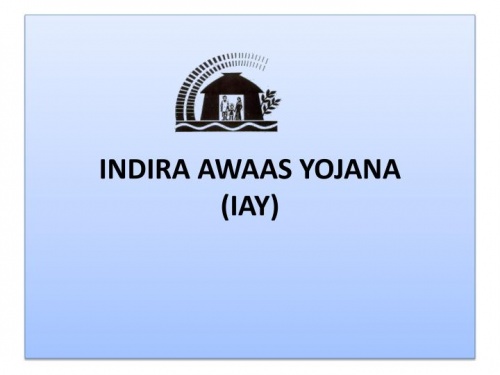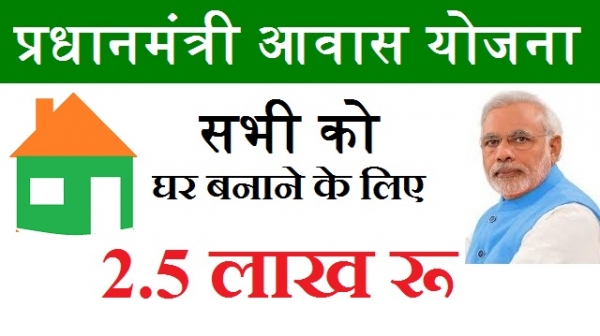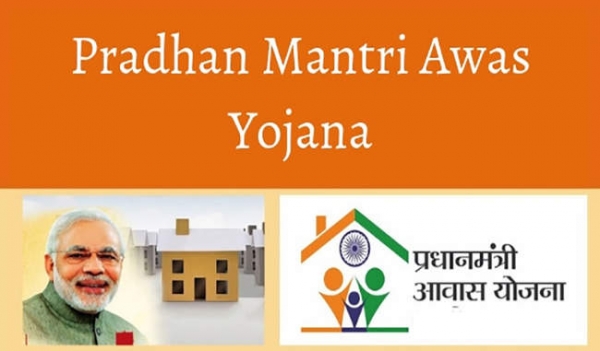IAY | Indira Awaas Yojana – Business2Business
Under this scheme, a total of ₹120,000 (US$1,700) worth of financial assistance will be provided in the plain areas and about ₹130,000 (US$1,800)
- by aditi verma 2020-03-09 08:59:04
Pradhan Mantri Gramin Awaas Yojana (PMGAY) was previously named as the Indira Awaas Yojana (IAY). The Government of India created this social welfare flagship program with the aim to provide housing to the rural poor in the country.
The Indira Awaas Yojana (IAY) was launched in the year 1985 by the then PM, Rajiv Gandhi. It had been one of the most appreciated flagship programs of the Ministry of Rural Development under the Government of India to construct housing facilities for the BPL people in the villages.

Under this scheme, a total of ₹120,000 (US$1,700) worth of financial assistance will be provided in the plain areas and about ₹130,000 (US$1,800) worth of financial assistance for the difficult areas (high land area) for the purpose of the construction of houses.
These houses have been equipped with all the basic facilities including a toilet, LPG connection, an electricity connection, and drinking water. These facilities have been provided with convergence with the other schemes, for instance, the Swachh Bharat Abhiyan toilets, Ujjwala Yojana LPG gas connection, Saubhagya Yojana electricity connection, and others.
A good thing about these houses is that they have been allotted in the name of the woman of the house or the husband and wife jointly. A Sanitary latrine and a smokeless chullah are essential to be constructed with each of the IAY houses. For this purpose, further additional financial assistance has been provided from the "Total Sanitation Campaign" and the "Rajiv Gandhi Grameen Vidyutikaran Yojana respectively.
Read More: All About Fortune Trading - Fortune Trading Corporation (FTC)
History of the Indira Awaas Yojana (IAY):
It was started in the year 1985 as a significant part of the Rural Landless Employment Guarantee Programme (RLEGP). The Indira Awaas Yojana (IAY) was added in the Jawahar Rozgar Yojana (JRY) in the year 1989. Ever since 1st January 1996, it has been operating as an independent scheme.
In the year 1993-94, the IAY scheme was successfully extended to the Non-SC/ST categories as well. From the year 1995–96, it got further extended to the widows or next-of-kin of defense personnel who had been killed in action, ex-servicemen and retired members of the paramilitary forces.
The "Indira Awaas Yojana" (IAY) had been restructured as the "Pradhan Mantri Gramin Awaas Yojana" (PMGAY) in the year 2015.
The purpose of this scheme is to financially assist the weakest sections of the society for the construction of a house of good quality for living. The government of India has the vision to replace all the temporary (kutchcha) houses by the year 2017.

The Major Benefits of IAY:
- Provide adequate support for the construction of houses in the rural areas of India.
- Providing Support for the construction of houses with proper provisions such as a workplace within the house.
- The houses will be designed to keep the requirements of the dweller in mind.
- The scheme will help to promote the use of technology and affordable materials that are conducive for the generation of employment, environment friendliness, sustainability, and easy management.
- Identification of the local materials and technology for the construction of houses that will last for at least 30 years.
- The scheme will help to Empower and encourage the village Panchayats to take up the role of planning and implementation of this program at the village level.
Special Projects that have been undertaken by the IAY :
The Indira Awaas Yojana (IAY) makes reserve funds available. These have been availed from the Central government for the completion of various special Projects in the States or the Union Territories for purposes like:
- Rehabilitation of the BPL rural families in case they have been affected by law and order or violent outbreaks.
- Rehabilitation of the BPL rural families who have been affected by natural calamities including storms, floods, etc.
- Provision of a settlement for the liberated manual scavengers and freed bonded laborers.
- Provision of a settlement for the vulnerable tribal societies.
- Rehabilitation of the people who have been affected by occupational diseases such as Asbestos, Silicosis, pesticides, etc. or epidemic diseases like “Kala-azar”.
- Settlement of the families included under “The Scheduled Tribes and Other Traditional Forest Dwellers Act, 2006”.
- Settlement of the families who have been forced to relocate their houses from those districts found along the international borders.
- Demonstration of new upcoming technologies with a focus on using affordable and eco-friendly ones

Funding and Allocation of Funds for IAY:
The scheme has been financed by the Central and the State Government on the basis of price sharing. The ratio of price sharing among the two is 75:25 percent, excluding those projects in the states that are a part of the North-East and the Union Territories. The Central Government will be funding 90 percent of the cost of projects for finance for the North-Eastern states and the 100 percent financing for the Union Territories. Both the authorities will be sharing 50:50 percent cost of the procurement of the house sites.
- 60 percent of the funds have been allocated to the SC/ST category. The proportion for dividing these funds among the SC and the ST will be figured out by the Ministry of Rural Development.
- 15 percent of the funding that has been set apart will be offered to the minority sections of society.
- 3 percent of the funding will be given to disabled individuals living in rural areas and are BPL.
- If some people are not falling under the category of beneficiaries that have been listed by the Ministry in a district, the Collector or the CEO of the Zilla Parishad needs to certify the same and make the required changes in the online software “Awaas Soft”.
The allocation of the funds will be done as:
- 95 percent of the funds under this program will be used to buy the items for these new houses such as purchasing the house sites, up-gradation of the houses and other administrative expenses.
- 5 percent of the funds will be used up for the several special projects that are carried out under the Indira Awaas Yojana.
The Ministry of Rural Development should allocate these funds based on the criteria given below:
1. 75 percent will be given to the housing shortage in rural areas and 25 percent will be given to the people who are living below the poverty line.
2. About 20 percent of a district’s funds will be used for the up-gradation of the kutcha houses for the BPL families.
Impact of the IAY:
Since the year 1985, over 25.2 million houses have been completed under the IAY. Under the Bharat Nirman Phase 1 project, more than 6 million houses had been targeted and 7.1 million were constructed from the year 2005–06 to 2008–09. In addition, 12 million houses have been planned to be constructed and renovated under the Bharat Nirman Phase 2 project.
PC: SlideServe, Finance and E-commerce, Sarkari Yojana, Prabhasakshi
Also Read: Yes Bank News - Yes Bank shares down to the lowest in a decade as RBI takes control
POPULAR POSTS
Loan EMIs to Drop as RBI Slashes Repo Rate - Full MPC December 2025 Highlights
by Shan, 2025-12-05 11:49:44
Zoho Mail vs Gmail (2025): Which Email Platform Is Best for Businesses, Startups, and Students?
by Shan, 2025-10-09 12:17:26
PM Modi Launches GST Bachat Utsav: Lower Taxes, More Savings for Every Indian Household
by Shan, 2025-09-24 12:20:59
$100K H-1B Visa Fee Explained: Trump’s New Rule, Clarifications & Impact on Indian Tech Workers
by Shan, 2025-09-22 10:11:03
India-US Trade Deal Soon? Chief US Negotiator Arrives in Delhi as Talks Set to Begin Tomorrow
by Shan, 2025-09-15 11:54:28
Modi Meets Xi: Trump’s Tariffs, Strategic Autonomy, and the Future of Asia’s Power Balance
by Shan, 2025-09-03 06:40:06
Google Claims Gemini AI Uses Just ‘Five Drops of Water’ Per Prompt, Sparks Debate
by Shan, 2025-08-22 12:34:27
RECENTLY PUBLISHED

Pine Labs IPO 2025: Listing Date, Grey Market Premium, and Expert Outlook
- by Shan, 2025-11-05 09:57:07

The Agentic Revolution: Why Salesforce Is Betting Its Future on AI Agents
- by Shan, 2025-11-05 10:29:23

Top 10 Insurance Companies in India 2026: Life, Health, and General Insurance Leaders Explained
- by Shan, 2025-10-30 10:06:42

OpenAI Offers ChatGPT Go Free in India: What’s Behind This Big AI Giveaway?
- by Shan, 2025-10-28 12:19:11

Best Silver Investment Platforms for 2025: From CFDs to Digital Vaults Explained
- by Shan, 2025-10-23 12:22:46





 Subscribe now
Subscribe now 